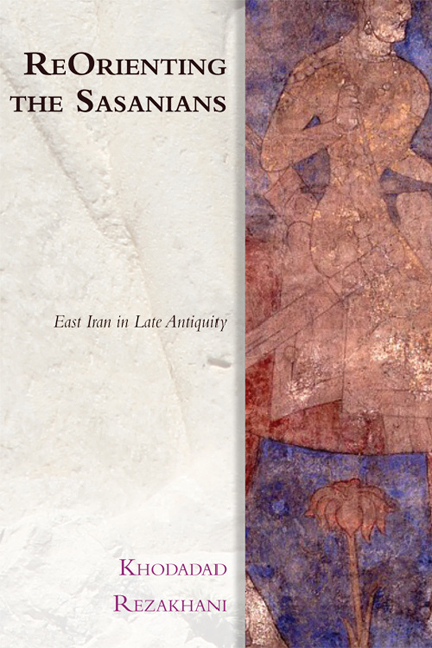Book contents
- Frontmatter
- Contents
- List of Illustrations
- Acknowledgements
- Series Editor's Preface
- Maps
- Preface
- Introduction
- 1 The Sasanians and the Sistanis
- 2 The Kushans and the Sasanians
- 3 The Kushano-Sasanians in East Iran
- 4 The Iranian Huns and the Kidarites
- 5 The Alkhans in the Southern Hindu Kush
- 6 The Hephthalite ‘Empire’ and its Successors
- 7 Sogdiana in the Kidarite and Hephthalite Periods
- 8 The Nēzak and Turk Periods
- 9 Tokharistan and Sogdiana in the Late Sasanian Period
- 10 General Conclusions and Postscript
- 11 Epilogue and Excursus on the Shahnameh
- Bibliography
- Index
Introduction
Published online by Cambridge University Press: 07 December 2017
- Frontmatter
- Contents
- List of Illustrations
- Acknowledgements
- Series Editor's Preface
- Maps
- Preface
- Introduction
- 1 The Sasanians and the Sistanis
- 2 The Kushans and the Sasanians
- 3 The Kushano-Sasanians in East Iran
- 4 The Iranian Huns and the Kidarites
- 5 The Alkhans in the Southern Hindu Kush
- 6 The Hephthalite ‘Empire’ and its Successors
- 7 Sogdiana in the Kidarite and Hephthalite Periods
- 8 The Nēzak and Turk Periods
- 9 Tokharistan and Sogdiana in the Late Sasanian Period
- 10 General Conclusions and Postscript
- 11 Epilogue and Excursus on the Shahnameh
- Bibliography
- Index
Summary
MEDIEVAL EAST IRAN AND ITS LATE ANTIQUE ROOTS
Around ad 1000, when Ferdowsi was composing his famous Shahnameh and narrating an idealised history of the kings of Iran, Tūs, his native city in the northeastern territories of Khurasan, seemed a natural place in which to undertake such task. It was in the heart of the Samanid lands, between Neishabur, Balkh, and Bukhara. Samanids, the masters of Transoxiana and much of the adjoining lands, were great patrons of Persian literature and all manners of learning, and presided over a brilliant period of cultural production that was to affect the rest of the history of the greater region. The first great Persian poet, Rudaki, was a retainer at their court, and great scholars of the Islamic world such as Avicenna or al-Biruni spent their early careers at the Samanid court. Bal‘ami, a Samanid minister, translated the great history of al-Tabari into Persian, and al-Tabari's famous Tafsīr was also translated into Persian at the Samanid court. At that moment in time, the Samanids embodied the concept of Iran, the Ērānšahr of the Sasanians, even more than their rivals in the west, the Buyids. Yet, 400 years before, Samanid Khurasan did not exist as a unit. Ferdowsi's native Tūs was a border town of the Sasanian Empire, and Bukhara was a rich merchant city of Sogdiana. Balkh, the ancestral homeland of the Samanids, was the dilapidated former capital of the Kushans and the Hephthalites. In ad 650, Sistan and Zabulistan, the centres of the newly emerging Ghaznavid power which succeeded the Samanids in the early eleventh century, were border regions ruled by little-known local chiefs whose names could not even be clearly comprehended by Muslim historians.
What had happened that allowed the Samanids and other ‘Khurasani’ powers that followed them to turn this peripheral region into a centre? What turned the ‘cleavage’ of Central Asia into the important region of Khurasan, a cradle of the new Persianate civilisation and the cultural world of Eastern Iran? The fact is, not many knew at the time, and not many more have cared to know ever since.
- Type
- Chapter
- Information
- ReOrienting the SasaniansEast Iran in Late Antiquity, pp. 7 - 26Publisher: Edinburgh University PressPrint publication year: 2017



